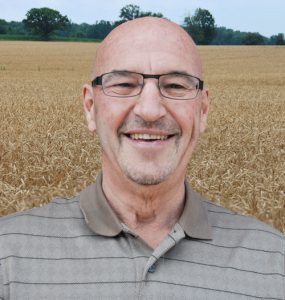Market side: Futures trading basics
LESSON 21: HEAD AND SHOULDERS

This monthly educational series features the basic workings of the futures and options markets and how they can be utilized to help farmers with risk management.
Marty Hibbs is a 25 year veteran futures trader, analyst, and portfolio manager. Hibbs was a regular guest analyst on BNN for four years. He is currently a grain merchandiser with Grain Farmers of Ontario.
HEAD AND SHOULDERS formations are considered a reversal pattern and can appear at a top or a bottom of an extended move and can signal a reversal in the current trend. The pattern appears on all time frames and can therefore be used by day and swing traders as well as longer term traders. Entry levels, stop levels, and price targets make the formation easy to implement as the chart pattern provides important and easy-to-see levels. For these reasons, this pattern is believed to be one of the most reliable trend reversal patterns.
The pattern begins in an extended bull move by making an interim high and a decline into a trough. This formation is the beginning of the left shoulder. From this level, the move continues into new high territory and again slumps back into another trough. This move is known as the head. The third, and possibly final run up in price, is met with stiff resistance and cannot overcome the previous high and fails. This failed rally is known simply as the right shoulder. A line connecting the two shoulders and the head is known as the neck line.
When prices break through this neckline and keep on falling after forming the right shoulder, it is the ultimate confirmation of the completion of the head and shoulders top formation. It is quite possible that prices pull back to touch the neckline before continuing their declining trend.

HOW TO TRADE THE PATTERN
A head and shoulders pattern takes time to materialize. Unlike most patterns, the head and shoulders pattern is more complex and it is important to wait for the pattern to complete. One should not assume that a pattern will develop, or that a partially developed pattern will become complete in the future. Partial or nearly completed patterns should be watched, but no trades should be made until the pattern breaks the neckline. In the head and shoulders we are waiting for price action to move lower than the neckline after the peak of the right shoulder. For the inverse head and shoulders, we wait for price movement above the neckline after the right shoulder is formed.
With regard to volume, you will notice that each attempt at a new high will show a decrease in volume and eventually the break will show an increase in volume. This is one way to confirm the pattern. The most common entry is when a breakout of the neckline occurs. Another entry point requires more patience but risks the possibility of a missed trade and involves waiting for a pullback to the neckline after a breakout has already occurred. This method is a more conservative approach, but it also means the trade may be missed if the price keeps moving in the breakout direction.
Lesson Definitions:
Neck line: A line drawn on a head and shoulders chart formation that connects the low of the left shoulder and head with the low of the right shoulder and head and acts as a trigger point for confirming the breakout of the pattern.
Debit spread: A debit spread is an option spread strategy in which the premiums paid for the long leg(s) of the spread are more than the premiums received from the short leg(s), resulting in funds being debited from the option trader’s account when the position is entered. •
DISCLAIMER: This information has been compiled from sources believed to be reliable, but no representation or warranty, express or implied, is made by the author, by Grain Farmers of Ontario, or by any other person as to its accuracy, completeness or correctness and Grain Farmers of Ontario accepts no liability whatsoever for any loss arising from any use of same.






















